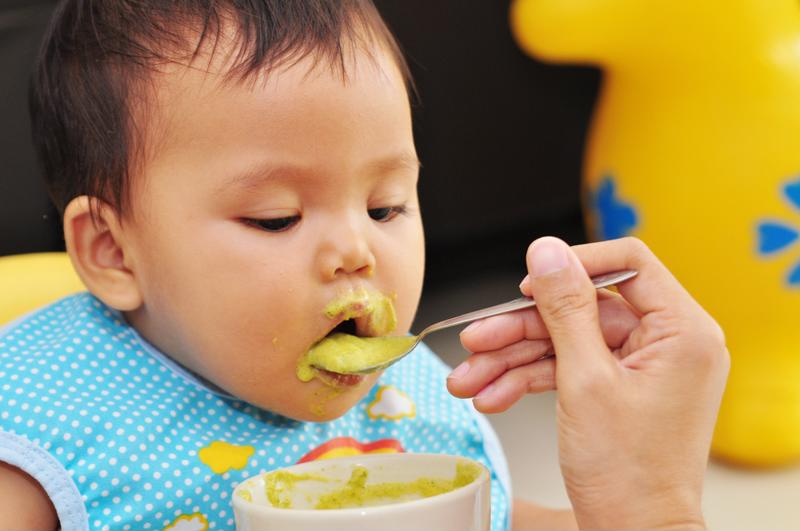As a new parent, you’ve likely considered making your own baby food at home. Many parents are taking this route in order to have full control over the ingredients, vitamins and minerals babies intake. And with gadgets and appliances made specifically for this purpose, making your own baby food at home is easier than ever.
Best of all, you don’t have to be an expert chef to make something that’s delicious and healthy. As long as your baby is four to six months old, and has met certain developmental milestones recommended by the American Academy of Pediatrics, you can start whipping up some of these mouthwatering, homemade baby food recipes:
1. Purees for four- to six-month-olds
As Cooking Light contributor and registered dietician Carolyn Land Williams noted, single-ingredient fruit or vegetable purees are perfect for babies younger than seven months old. When introducing solid foods like this for the first time, it’s important to make bigger batches of purees so you can serve the same food to your baby for four days to a week. This gives you time to watch for any signs of allergy or discomfort. Once you understand what your baby likes and what he or she can digest easily, you can move on to another, single-ingredient puree until baby has tried a range of grains, fruits and vegetables.
Some of the best single-ingredient purees include:
- Carrots.
- Bananas.
- Avocados.
- Green peas.
- Butternut squash.
These vitamin-rich choices are mild and just a tad bit sweet, encouraging baby to try and enjoy. While bananas and avocado typically puree pretty well on their own, you may want to add a bit of liquid to any puree you’re making for babies under six months old until they are near a liquid consistency. Thinning the mixture down with a bit of water or breast milk will help with digestion.

2. Thicker, more complex purees for seven- to nine-month-olds
Once your baby has passed the six-month mark, you can begin changing up his or her diet with purees that are a little bit thicker and have more than one ingredient. As with the single-ingredient purees, though, it’s important to introduce new foods one at a time and serve them for several days in a row so you can see what baby likes and what might upset his or her small tummy.
Some combinations to consider here include:
- Pumpkin and thyme.
- Beets and blueberry.
- Spinach and white yams.
- Avocado and banana.
- Butternut squash and pear.
Best of all, these purees lend themselves well to freezing, so you can prepare a bigger batch, freeze individual servings and thaw as needed. Check out these and other puree recipes here from HealthLine.
3. A classic: Homemade rice cereal
This is one of the first solid foods that many parents feed their little ones, but many store-bought brands are processed and fortified, meaning that vitamins stripped out during processing are put back in. Parents that prefer more natural, whole ingredients can make their own baby rice cereal at home.
As The Vintage Mixer pointed out, homemade rice cereal for babies – especially recipes that use healthier, brown rice – includes a lot of nutrients. And while it’s a bit time-consuming to make, it’s incredibly cost-effective.
All you have to do is take your store-bought brown rice and put it into your blender or food processor until the rice is turned into a powder. Then, you can prepare as usual over the stovetop using your regular formula or breast milk. Check out The Vintage Mixer’s baby rice cereal recipe here.
